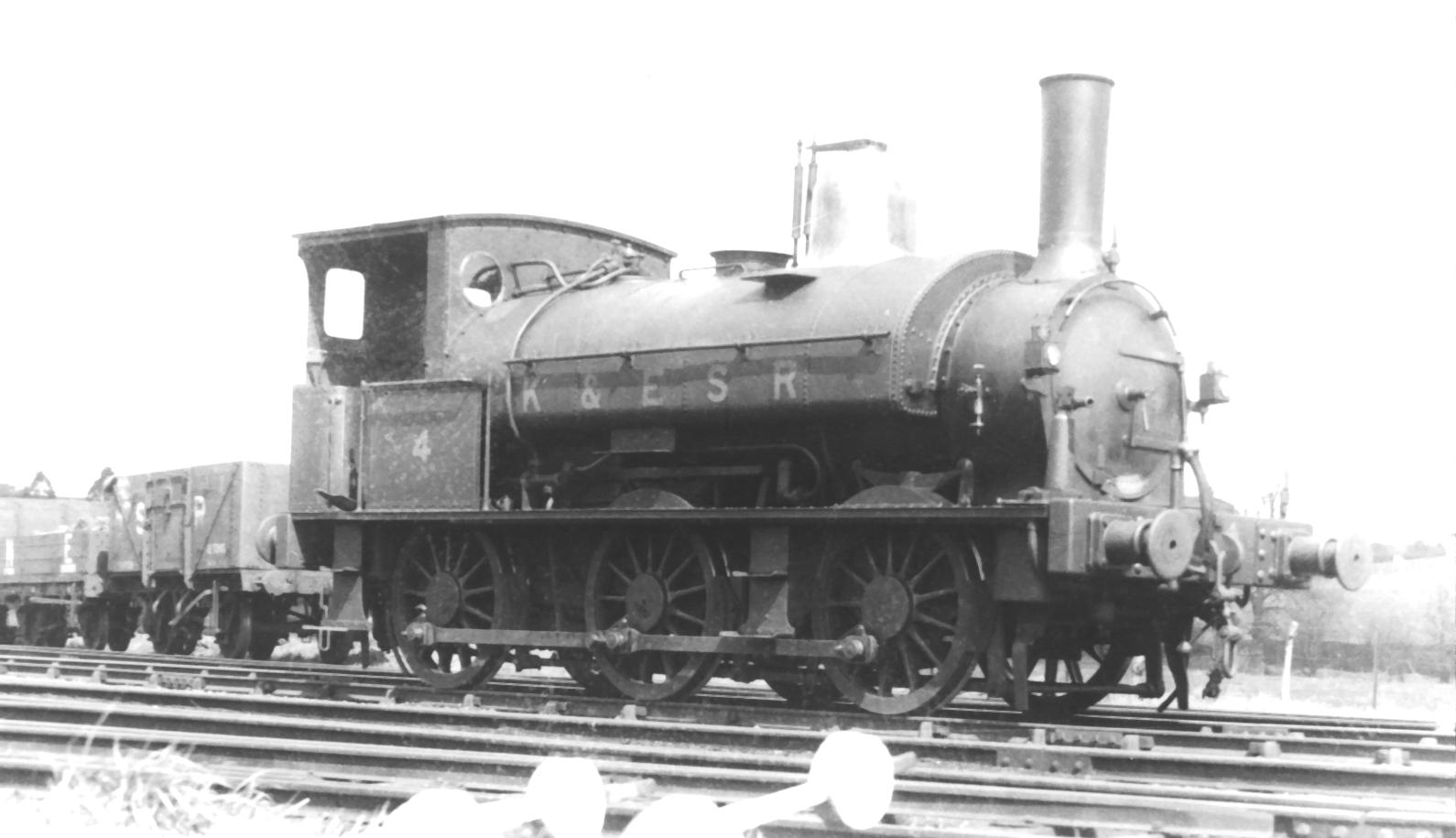
|
The Kent & East Sussex Railway 1900 - 1958 |
Ken Elks Copyright © 2002
The Kent & East Sussex Railway was the first railway to be constructed under Light Railways Act 1896, which allowed the construction of railways to less rigorous standards in return for limitations on speed etc. Fresh from his work on the Selsey Tramway, H.F.Stephens, later known as Colonel Stephens, was the engineer during construction, later appointed General Manager and then Managing Director.
Plans for a railway via Tenterden dated back to 1850 but none of the proposals were carried out. This left a large rural area centred on the town without any rail service and when the major railways showed a lack of interest in providing one an independent scheme was proposed. This was for a railway connection to Tenterden from the South Eastern Railway main line to Hastings.
Because the line ran through the Rother Valley it was initially known as the Rother Valley Railway, more or less following the river as far as Northiam and then turned north towards Rolvenden. This first stage of construction involved many bridges and culverts, together with a large number of ungated level crossings. The line opened from the SER at Robertsbridge to Tenterden on 26 March 1900 for freight and 2 April 1900 for passengers. The site of the initial terminus was remote from the town, about a mile away and down a hill. Initially there were just three intermediate stations, at Bodiam (near the castle), Northiam and Wittersham Road (the appellation "Road" in this context meant as usual that the station was well over two miles from the village and in this case closer to Rolvenden). In 1903 the line was extended into Tenterden itself, another 11/2 miles, the station becoming Tenterden Town and the old station being renamed Rolvenden. In the same year two halts, were opened between Robertsbridge and Bodiam, Salehurst Halt and Junction Road Halt.
In 1904 the name of the line was changed to the Kent and East Sussex Railway, reflecting far more grandiose schemes such as a line to Cranbrook connecting to the newly-formed South Eastern and Chatham Railway's Hawkhurst Branch and another to Rye, neither of which were ever built. However, with the backing of the SECR, the line was extended north to make a junction with the mainline to Ashford and Dover at Headcorn, with the intention of extending further to Maidstone. This new Headcorn section opened on 15 May 1905 with stations at St Michaels (Tenterden), High Halden Road, Biddenden and Frittenden Road. Both "Road" stations were remote from the actual villages.
In its early years the railway prospered, despite its rural location and during the First World War the line was taken over by the Government in order to facilitate the movement of men and strategic supplies and retained until 1921. Afterwards, like many other railways, the line began to suffer during the 1920's by the increased use of motor buses and it was to overcome this that the line pioneered the use of petrol-engined railcars adapted from lorries, which remained in use until 1939. As with other Colonel Stephens' railways, apart from a few locomotives and coaches purchased new either at the outset or in the heyday of the line, the rolling stock,was a ragbag of second hand vehicles given a new lease of life.
The Headcorn section made a substantial loss and was only continued in use because of an agreement with the SECR and its successor, the Southern Railway, to make good these losses. Following the death of Col. Stephens in 1931, the line placed in receivership and was managed by W.H.Austen, a friend and colleague of Stephens. Despite economies that he made, the line declined rapidly during the 1930's and was saved from the prospect of closure only by the intervention of the Second World War, when the line was again commandeered by the government and used, among other things, to house two rail-mounted guns as part of the anti-invasion forces.
The KESR staggered on until 1948, when it was nationalised, together with all the other railways of Britain. Recent documents released show that British Railways wanted to close the line immediately, but did not think it was politic to do so. Consequently much expenditure was incurred bringing the track up to proper standards. Passenger services, however, ceased on 2 January 1954 and the track taken up on the section from Tenterden to Headcorn in 1955. Freight continued between Robertsbridge and Tenterden, together with hop-pickers trains and occasional enthusiasts' specials until the rest of the line finally closed on 12 June 1961.
Epilogue
Normally that would have been the end of the story, but during the 1960's preservationists fought to reopen the line, setting up a base at Rolvenden. In 1971 the Tenterden Railway Company was formed with the intention of re-opening the line between Tenterden and Bodiam, starting with the short section to Rolvenden on 3 February 1974, the rest following at intervals and finally reaching Bodiam in 2000. Currently the KESR is one of the most successful railways in preservation. There have also been plans by a separate organisation to open the last section to Robertsbridge but as yet these have not come to anything.
Note: Although the KESR was never operated by the Southern Railway, early interim BR issues used the Southern Railway heading on tickets.

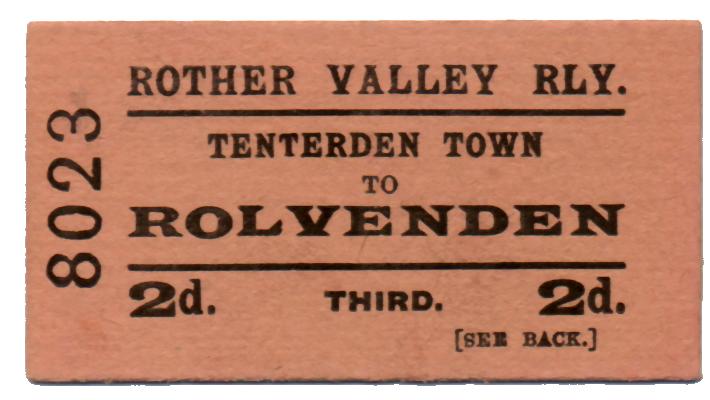
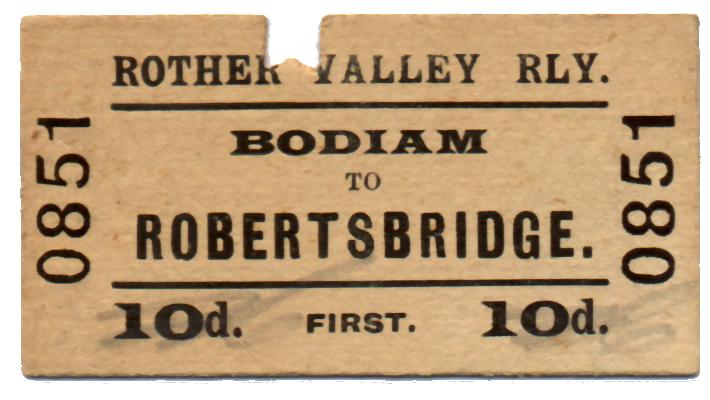
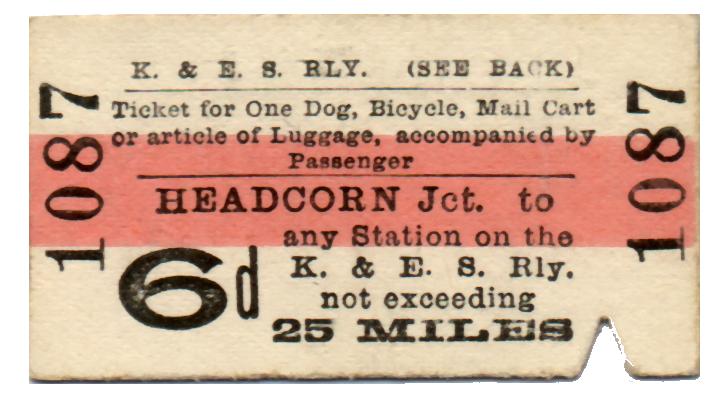
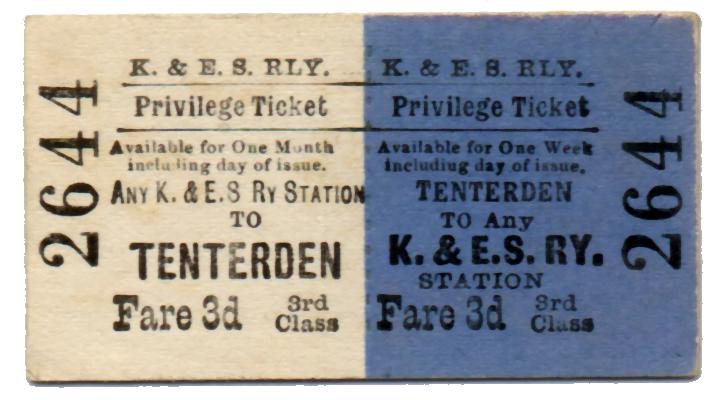
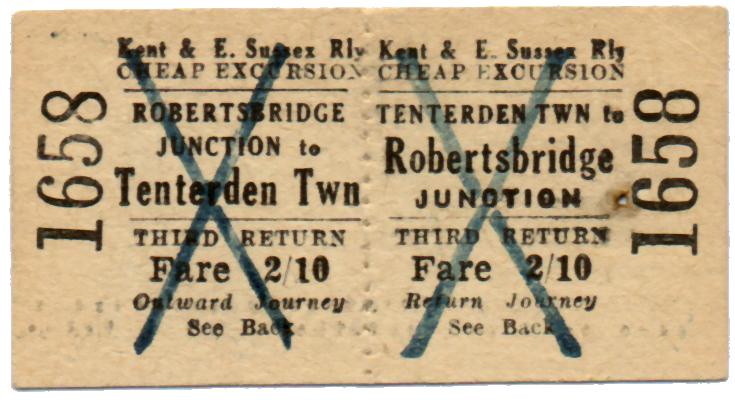
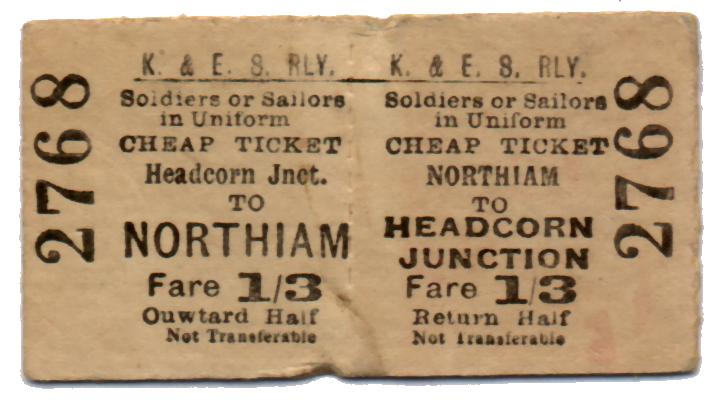
Further reading:
"The Kent & East Sussex Railway" by Matthew Beddall, published in 2000
Solo Publications, 26 St Martins Hill, Canterbury CT1 1PP
|
AVAILABLE NOW East Kent Railway Tickets 1916-1948 by Ken Elks. 71pp colour, listing all known surviving tickets with dates of issue. Price £10, post paid. |